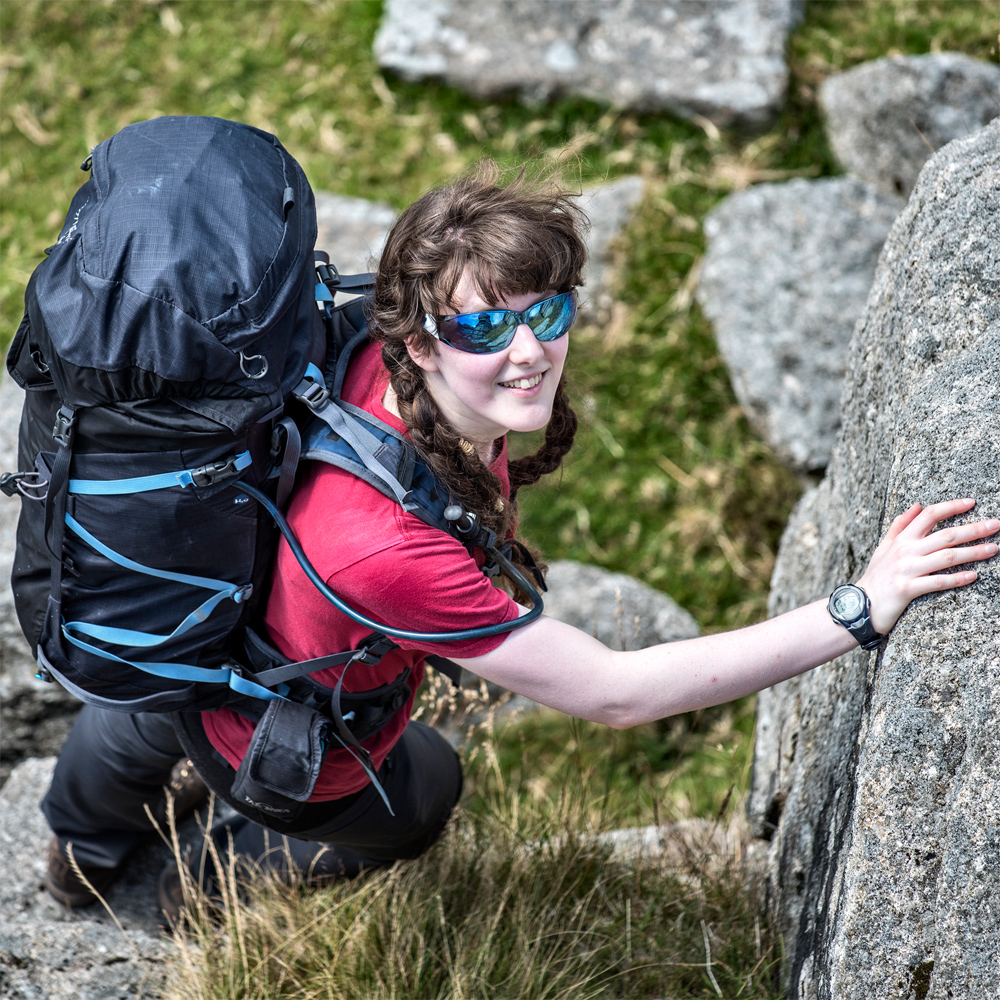The best first aid kits: be prepared for accidents and emergencies
Having the best first aid kit to hand when an incident occurs on the hill means you can act fast when someone is in need
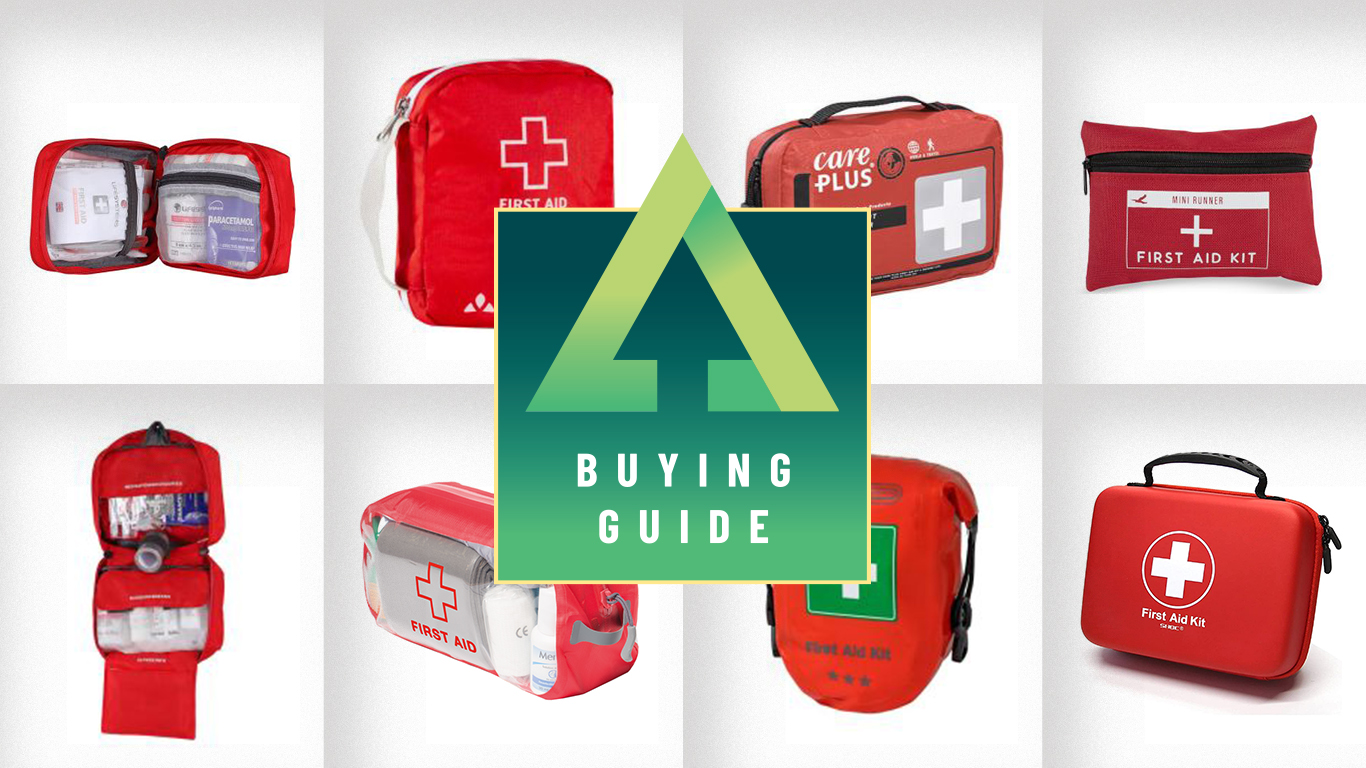
Having the best first aid kit for your summer adventures is important. Even though it may be the safest time to explore the great outdoors, it's also the time of year when the trails are at their busiest. This means you're more likely to come across someone who might need assistance.
So, whether you’re going out for a short hike, trail running or off on a multi-day camping trip in the middle of nowhere, you’ll want to take the best first aid kit possible with you.
Of course, no one wants to actually need to use their first aid kit – and chances are the most you’ll ever need to do is apply a plaster to a blister caused because you hadn't properly worn in your new hiking boots – but that’s no reason not to take one. The best first aid kits are the ones you can pack and forget, safe in the knowledge that you’re equipped for the situation you’re going into.
Of course, what constitutes the best first aid kit also depends very much on what you’re doing at the time. You don’t want to find yourself out on a snowy alpine peak, only to discover your entire first aid provision is a pack of dinosaur print plasters and a box of paracetamol. You can read more about why to take a first aid kit and how to put one together for yourself in our guide on how to build your own first aid kit for camping and hiking.
The best first aid kit you can buy for individual adventure activities
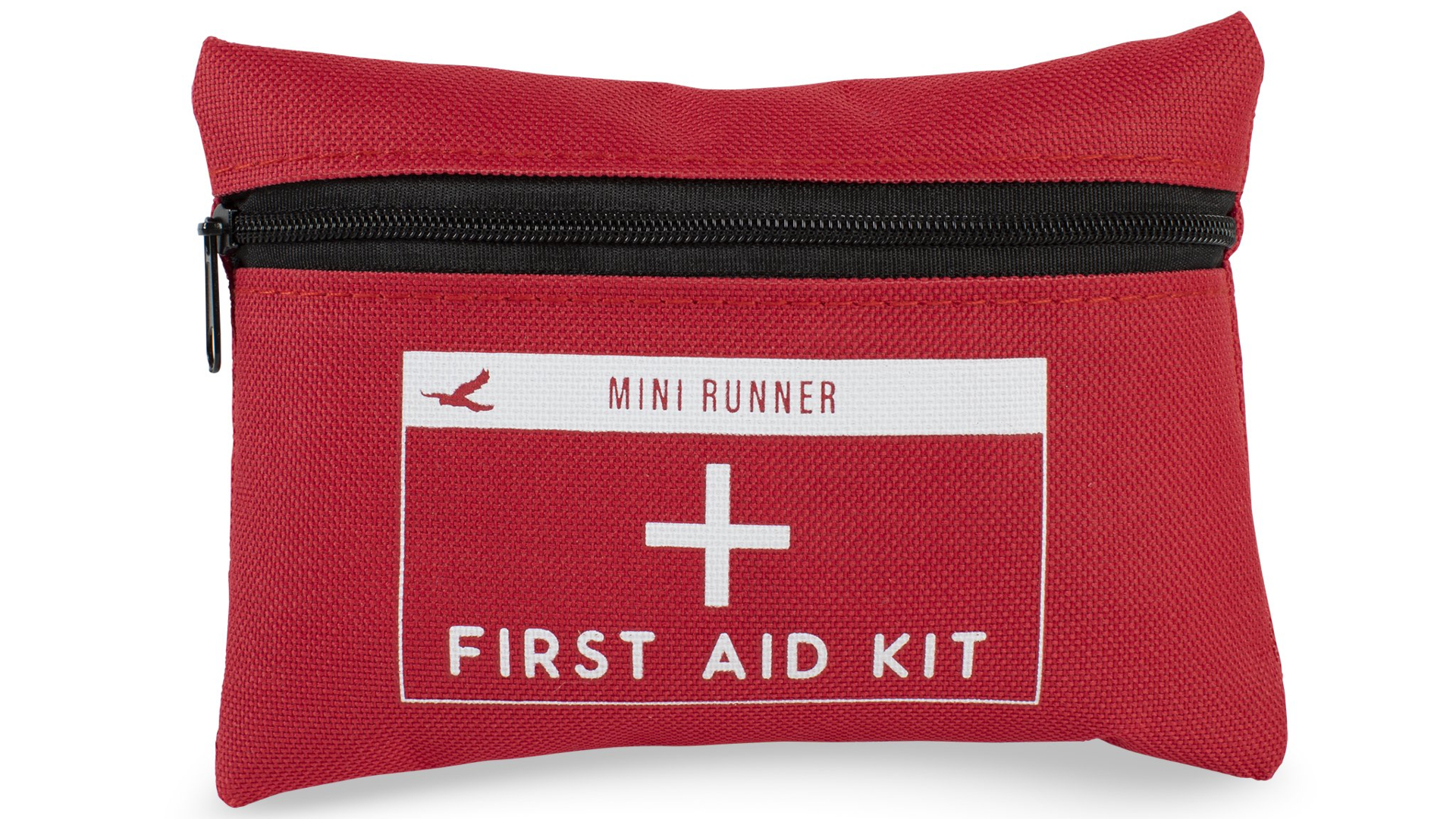
1. Harrier Mini Runner First Aid Kit
Specifications
Reasons to buy
Reasons to avoid
The Harrier Mini Runner First Aid Kit comes in a water-resistant ripstop nylon case, with all the contents in a durable plastic zip lock waterproof inner bag. It is by far the smallest and most compact first aid kit we tested – ideal for slipping into a trail running vest. The contents are basic but should cover quick fixes of minor injuries you might encounter on a trail run: blisters, cuts, grazes and immobilising a broken arm. There is also an elasticated gauze bandage which might help a sprained ankle until you get back to civilisation. The plasters and blister pads are quite small (but you get plenty – four of each). You might also slip in some paracetamol or ibuprofen of your own, which will easily fit in the pouch and provide you some pain relief. The bottom line? The best first aid kit out there for runners and gram-counting solo hikers.
Full first aid contents:
- 4 x Adhesive plasters
- 4 x Blister plasters for feet
- 2 x Cleansing wipes
- 1 x Small adhesive tape
- 1 x Sterile dressing / gauze pad
- 1 x triangle bandage
- 6 x Safety Pins (large)
- 1 x Elasticated Cohesive Bandage (6cm x 4m)
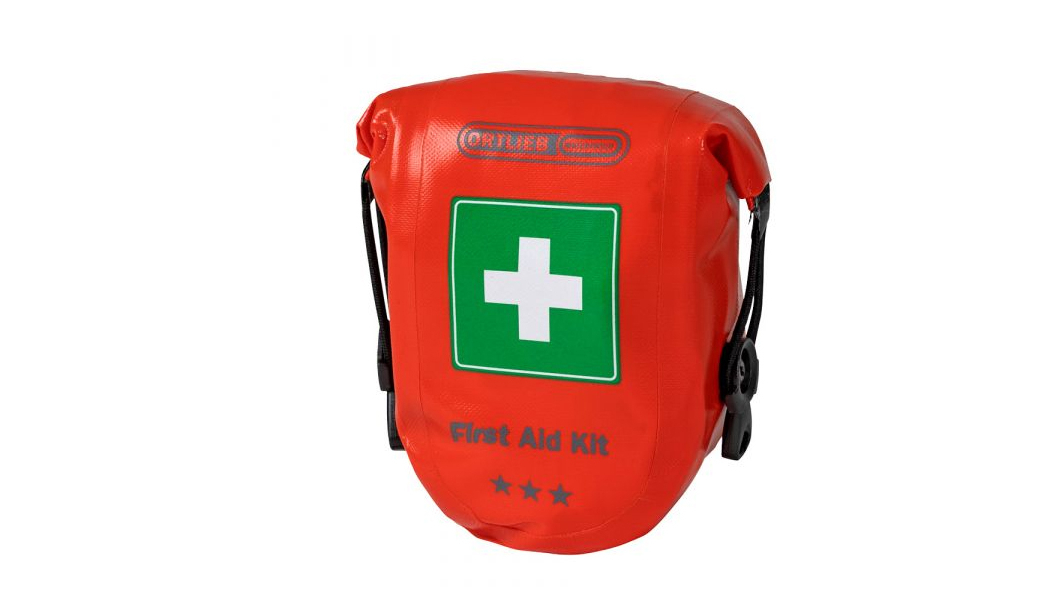
2. Ortlieb First Aid Kit Regular
Specifications
Reasons to buy
Reasons to avoid
The Ortlieb First Aid Kit Regular comes in a 100% waterproof case, with clever roll-top closure and a 5-year warranty. There is a separate strap included that allows you to attach your first aid kit to the outside of a rucksack, under a bike saddle or onto any sort of belt. This makes the most of the waterproofing and gives you very easy access in an emergency.
We thought that the case was fantastic, but the first aid kit feels a bit empty for the size. It feels much more bulky than the Harrier Mini Runner kit, but has about the same contents. That said, there is extra room in the case, so you could easily add more of your own items for more extensive cover on a day hike. All the contents come inside a single plastic zip top bag.
Full first aid contents:
- 1 x multilingual first aid brochure
- 1 pair medical gloves
- 2 x sterile bandages
- 5m sticking tape (narrow but feels like sports tape)
- 2 x finger plasters
- 2 x mini plasters
- 4 x plasters
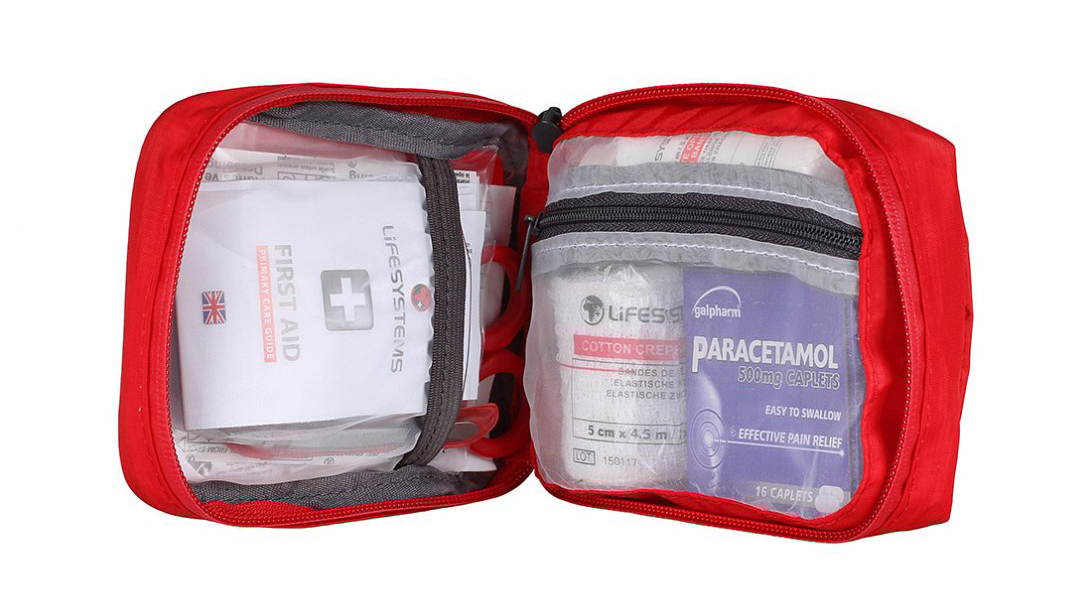
3. Lifesystems Trek First Aid Kit
Specifications
Reasons to buy
Reasons to avoid
The Lifesystems Trek First Aid Kit is designed specifically for trekking and hiking. It's about the same size externally as the Ortlieb first aid kit, but contains far more inside. However, it is not waterproof, so be sure to check out our best dry bags if you want to keep the contents dry. This first aid kit is recommended kit for Duke of Edinburgh’s Award expeditions, for personal use. We found it easy to use. It comes sealed with a tag, so you can tell if the kit has been opened or not. This first aid kit is equipped to deal with most eventualities on day hikes. As well as containing everything you need to treat hiking injuries like cuts, grazes, blisters and sprains, it contains pain relief and burn gel. The tweezers can be used for removing ticks or splinters and are far more effective than a standard penknife pair. There is also a short first aid leaflet and a pair of scissors for cutting plasters to size.
Full first aid kit contents:
- 1 x Primary Care Leaflet
- 1 x Tweezers
- 1 x Scissors 5.5cm Blade
- 6 x Safety Pins
- 16 x Paracetamol Tablets (not included in EU kit)
- 1 x White Open Woven bandage 7.5cm x 5m
- 1 x Crepe Bandage 5cm x 4.5m
- 5 x 4-Ply Gauze Swabs 5 x 5cm
- 1 x Micropore Tape 1.25cm x 5m
- 4 x Hygienic Cleansing Wipes
- 2 Pairs Vinyl Gloves
- 1 x Burn Gel Sachet
- 1 x Low Adherent Dressing 5 x 5cm
- 1 x Low Adherent Dressing 10 x 10cm
- 1 x Sterile Adherent Dressing
- 1 x Pack of Assorted Plasters
- 2 x Blister Plasters
- 1 x Small Eyepad Wound Dressing (only included in EU kit)
The best first aid kit you can buy for group adventure activities
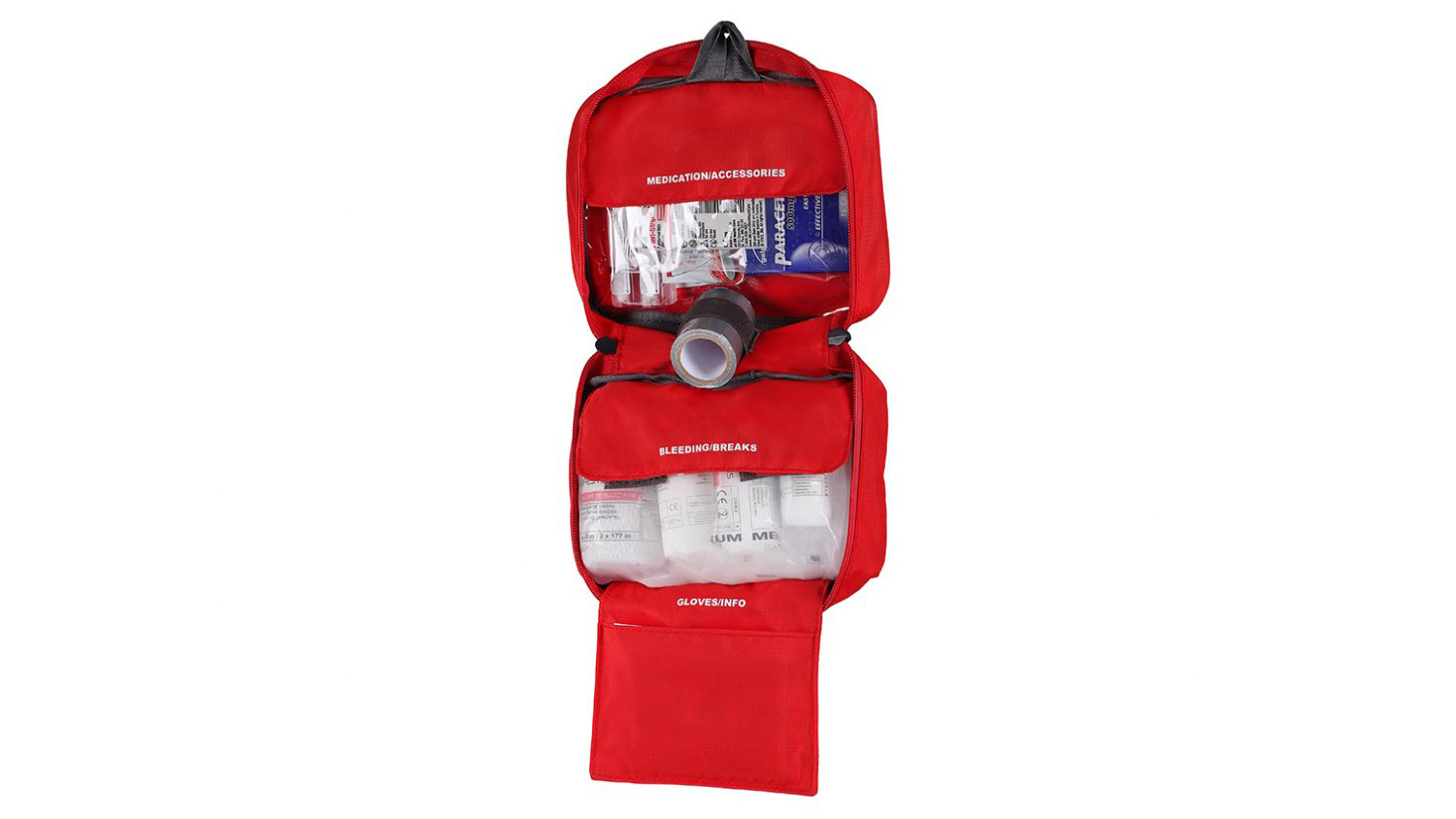
4. Lifesystems Camping First Aid Kit
Specifications
Reasons to buy
Reasons to avoid
We think this is the sort of size of kit where you’ll want one per team, not one per bag. For personal camping, the Lifesystems Trek would probably suffice – whereas as this kit will cover most commonly encountered first aid needs of a whole family or group, and wins our vote as the best first aid kit for outdoor leaders. Inside, there are clearly labelled separate compartments, which made it easy for us to find what we were looking for in the event of an emergency. There are treatments for burns, wounds, breaks and sprains, cuts, eye injuries... basically any minor injury you’d cover on an Outdoor First Aid course except allergic reactions. There is even a credit card size thermometer for checking someone’s temperature. (It’s worth mentioning that our test kit didn’t have one of these, however it should come with one as standard.) We particularly liked the inclusion of a little roll of duct tape! There are plenty of each item, so you should be covered for even the clumsiest group of walkers.
Full first aid contents:
- 1 x Primary Care Leaflet
- 1 x Tweezers
- 6 x Safety Pins
- 1 x Scissors 5.5cm Blade
- 2 Pairs Vinyl Gloves
- 1 x Spot Check Thermometer
- 16 x Paracetamol Tablets (not included in EU kit)
- 1 x Crepe Bandage 5cm x 4.5m
- 1 x Triangular Calico Bandage 90 x 127cm
- 1 x Open Woven Bandage 7.5cm x 5m
- 6 x Hygienic Cleansing Wipes
- 1 x Zinc Oxide Tape 1.25cm x 5m
- 1 x Micropore Tape 1.25cm x 5m
- 5 x 4-Ply Gauze Swabs 5 x 5cm
- 3 x Burn Gel Sachets 3.5g
- 2m Duct Tape
- 2 x Sterile Eye Wash (20ml each)
- 1 x Pack of Assorted Plasters
- 1 x Medium Wound Dressing 12 x 12cm
- 2 x Low Adherent Dressings 5 x 5cm
- 1 x Low Adherent Dressing 10 x 10cm
- 1 x Small Plaster Fabric Strip 4cm x 1m
- 3 x Wound Closure Strips
- 1 x Small Eyepad Wound Dressing (2 x in EU kit)
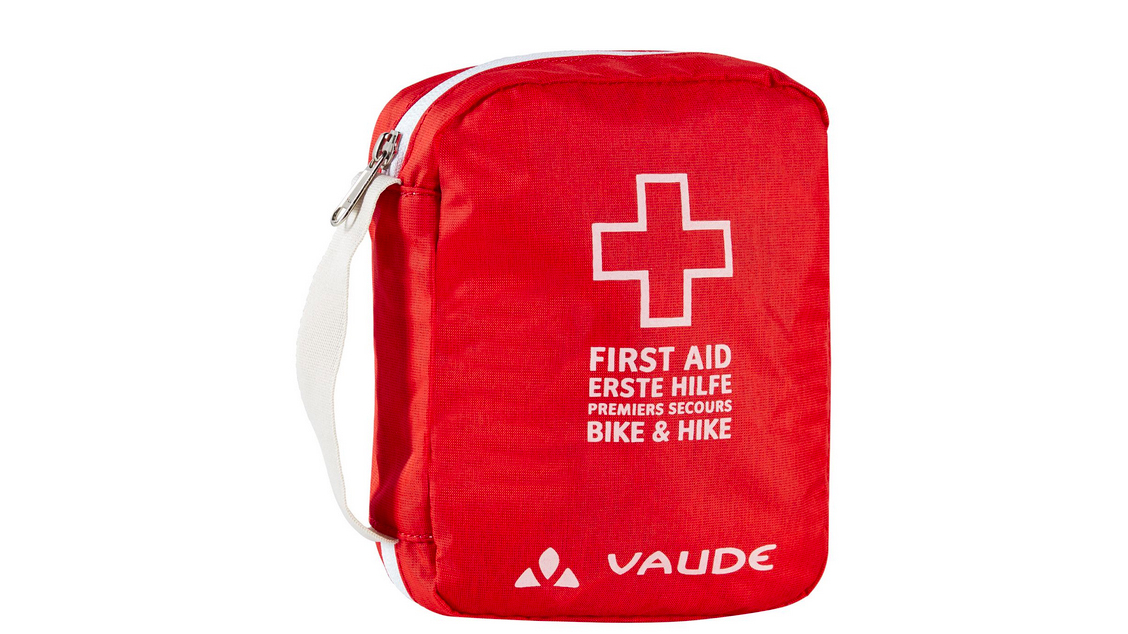
5. Vaude First Aid Kit L
Specifications
Reasons to buy
Reasons to avoid
The Vaude First Aid Kit L is the largest first aid kit currently available from Vaude. It's a bit bigger externally than the Lifesystems Camping kit and a bit more expensive. The case isn’t waterproof, but Vaude do make waterproof versions in medium and small. As a company, their commitment to sustainability can be seen across the product range. You’ll find recycled materials in everything from jackets to first aid kits. Inside, we like the fact the kit contains additional mesh pockets for storing own medication, which is a nice touch. In terms of first aid provision, it contains items for treating minor wounds, cuts, broken bones, sprains and burns. It also has a pair of tweezers, for removing splinters or ticks, and a pair of scissors. Unusually for first aid kits, it also comes with an emergency blanket. There are no pain relief tablets, but the mesh pockets allowed us to add our own.
Full first aid kit contents:
- 1 x elastic bandage (4mx8cm)
- 1 x dressing bandage, sterile (8x10cm)
- 1 x dressing bandage, sterile (6x8cm)
- 3 x wound closure strips
- 1 x wound compress, sterile
- 1 x burn dressing, sterile
- 1 x triangular bandage
- 3 x finger plaster butterfly (44x76mm)
- 3 x finger plaster (20x120mm)
- 4 x plaster (25x72mm)
- 2 x plaster (19x72mm)
- 6 x plaster (10x6cm)
- 3 x blister plaster
- 6 x wet wipes
- 1 x adhesive tape (5mx2,5cm)
- 6 x safety pins
- 1 x disposable gloves
- 1 x emergency blanket (160x210cm)
- 1 x small scissors
- 1 x tweezers
The best first aid kit you can buy for remote adventures
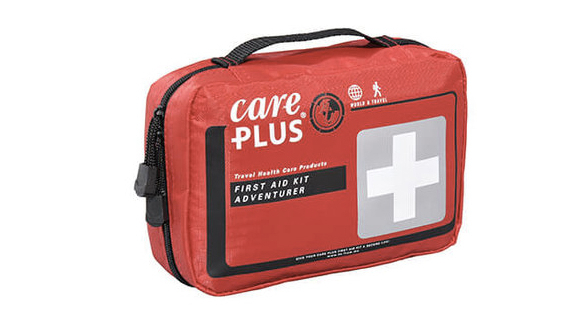
6. Care Plus Adventurer First Aid Kit
Specifications
Reasons to buy
Reasons to avoid
The Care Plus Adventurer First Aid Kit is designed for travel into remote areas with little medical assistance, at home or overseas. It’s also been put together with outdoor activities, and associated potential injuries, in mind. We found it to be a very large and heavy bit of kit. But this is not the kind of thing we're going to cut corners on in the wilderness. This first aid kit has the sort of contents that you wouldn’t know how to use properly unless you’ve had some advanced first aid or medical training. Syringes, trauma dressings, blood lancets… everything you need to deal with more than minor injuries by yourself. It includes tweezers, a mouth shield for CPR and trauma shears – which sound like something out of a Saw movie but are actually for cutting away clothing. For most readers, this will be an absolute overkill, but for remote expeditions this kit could save lives.
Full first aid contents:
- 1 x Sterile compress 5×5 cm
- 1 x Hydrophilic bandage 5 cm x 4 m
- 5 x Wound plasters 19×38 mm
- 5 x Wound plasters 25×72 mm
- 2 x Wound plasters 60×100 mm
- 1 x Trauma dressing 12×12 cm
- 1 x Butterfly bandage roll 1.25 cm x 1 m
- 5 x Butterfly bandage
- 6 x Needle and syringe 0.6×25 / 5 ml
- 3 x Disposable syringe 2 ml
- 6 x Disposable syringe 5 ml
- 6 x Disposable syringe 0.4×20
- 6 x Disposable syringe 0.8×40
- 1 x Infusion needle (Canula IV) 125 ml/min
- 1 x Suture & needle 75 cm/nylon
- 4 x Blood lancet
- 1 pair Vinyl gloves
- 10 x Alcohol wipes
- 1 x Trauma shears (small)
- 1 x Tweezers
- 1 x Scalpel
- 1 x Mouth-to-mouth shield
- 1 x Medical certificate
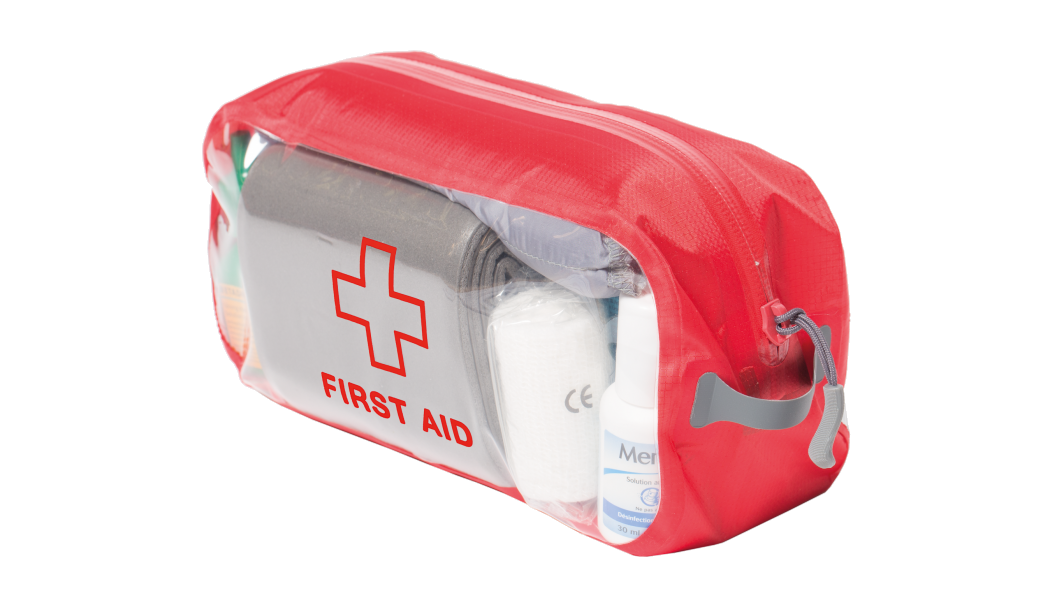
7. Exped Clear Cube First Aid M
Specifications
Reasons to buy
Reasons to avoid
The Exped Clear Cube First Aid is a transparent and ultralightweight pouch, designed and labelled specifically for first aid use. It’s perfect if you already have some or all of your first aid kit contents and don’t want to end up with duplicates by buying a full kit again. Or, alternatively, if you’ve got some very specific things in mind. We found it easy to arrange our own provisions in a way that suited us. The case is fully waterproof and big enough for a personal first aid kit and probably a small group, depending on what you put in it. (You can fit the entire Lifesystems Camping kit inside, including the case.)
First aid kit comparison table
| First Aid Kit | RRP | Weight | Group Size | Compatibility |
| Harrier Mini Runner First Aid Kit | $10 (US) / £9 (UK) | 57g / 2oz | Individual | Trail running |
| Ortlieb First Aid Kit Regular | £22 (UK) | 180g / 6.3oz | Individual | Hiking / Cycling / Camping |
| Lifesystems Trek First Aid Kit | £19.99 (UK) | 240g / 8.5oz | Individual or very small group | Hiking and trekking |
| Lifesystems Camping First Aid Kit | £37.99 | 452g / 16oz | Small group | Family and group camping |
| Vaude First Aid Kit L | £35 (UK) / €40 (EU) | 350g / 12oz | Small group | Hiking, longer treks and backpacking |
| Care Plus Adventurer First Aid Kit | £23.99 (UK) | 446g / 15.7oz | Expedition Team | Expeditions and overseas travel in remote areas |
| Exped Clear Cube First Aid M | $29.95 (US) / £22.95 (UK) | 34g / 1.12oz | N/A | Independent outdoor adventurers |
How to choose the best first aid kit for hiking and camping
If you ask the following important questions, the answers will help you choose the best first aid kit for adventures on the wild side, not matter what you’re planning.
How many people are you heading out with?
You can trust Advnture
Does your first aid kit only need to over you in an emergency? Or will it have to be enough for several people? Perhaps you’re the leader of a group and need a first aid kit to cover all eventualities. Plus, don’t forget to consider the actual people in your group: how old are they and do they have any known allergies or medical conditions?
How long are you going for?
The longer you’re in the wilderness, the more chance there is of things going wrong. That’s simply statistics. So if you’re just popping out for an afternoon run on the trails, you probably don’t need burn salve and a hundred bandages.
How remote are you going?
The size of your first aid kit goes up the further away from civilisation (and help) you travel. Practically, this is because you’re more dependent on its contents for providing aid. You’ll need to be far better equipped if you’re five days out from the nearest town than if someone can reach a shop in 15 minutes. Also be aware of what it’s possible to buy in other countries if you’re going on an expedition. You don’t want to be relying on something that can’t actually be bought in the country. If you're heading into mosquito or midge territory, be sure to check out our best insect repellents and read how to avoid bites and stings on the trail.
Have you done a risk analysis of your planned adventure, and what are the most likely injuries that might be sustained?
This is a little vague, but think about the risks and dangers associated with the activity your first aid kit is covering. Mountaineering and rock climbing have risks of long falls onto hard ground or maybe rockfall from above. This is unlikely to be a risk on a flat hike in open country. If you’re camping and cooking on a stove, there’s a risk of burn injuries. Write out a quick list of all the things that could happen. Then think about it like an insurance policy: balance likeliness with risk. Sure, you could pack an ECG and a defibrillator just in case, but balanced with the other three points above, is it worth it?
Advnture Newsletter
All the latest inspiration, tips and guides to help you plan your next Advnture!
An adventure writer based on Dartmoor, England, Emily is an active member of Mountain Rescue and a summer Mountain Leader, but loves all things adventure – before her third birthday she had lived on three continents. Founder of Intrepid magazine, she works to help break stereotypes about women in the outdoors. Her expeditions have included walking all Dartmoor’s 119 tors in a single two-week outing, cycling to Switzerland and back, and riding the Rhine from source to sea.
